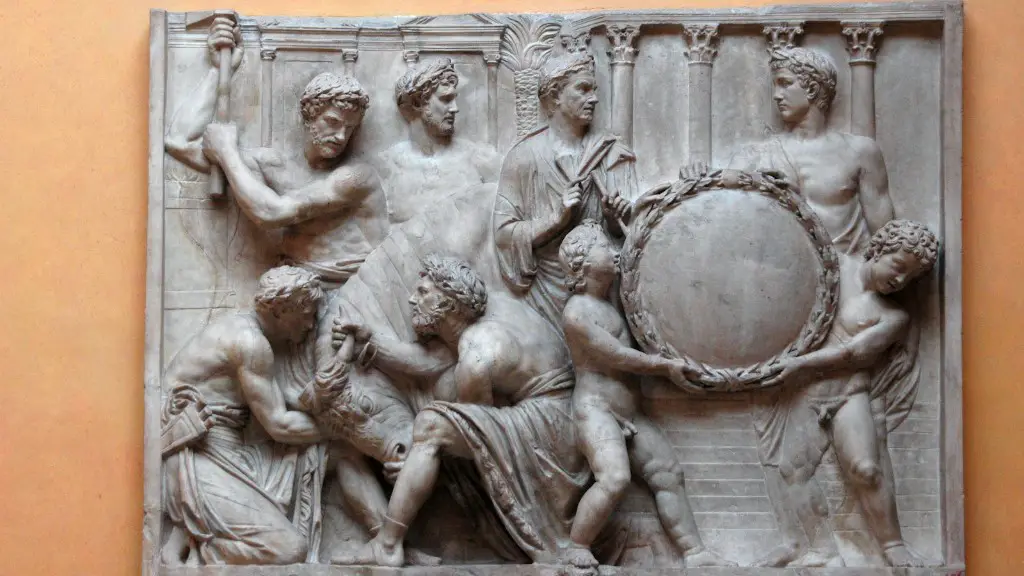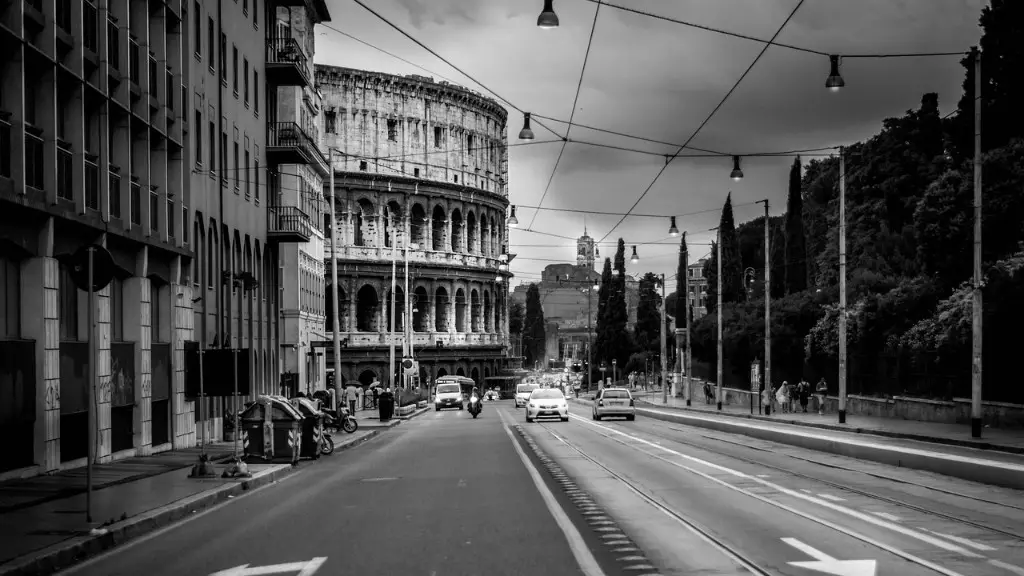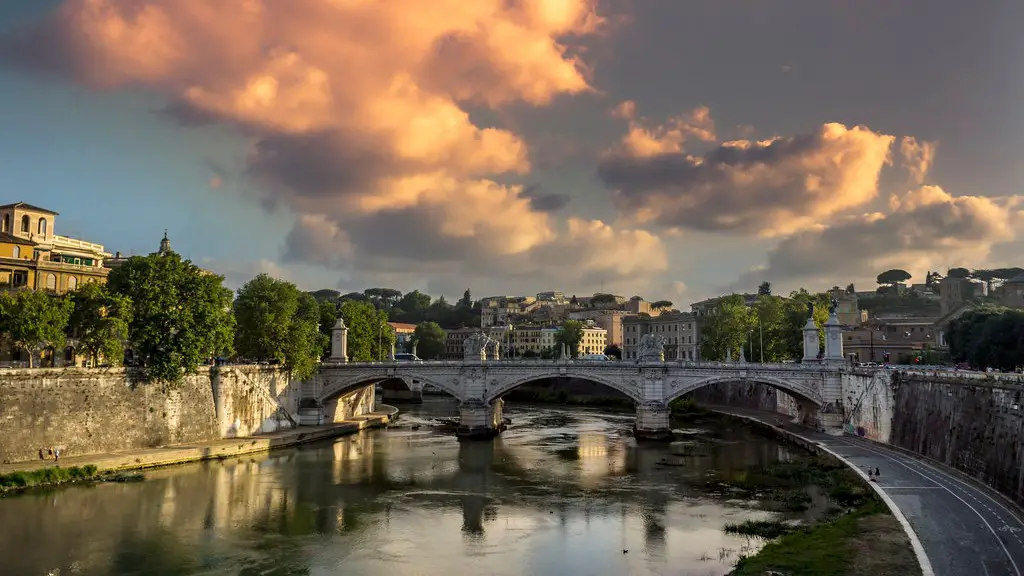Political Structure
Ancient Rome was a discordant union of a city and its surrounding territory, as well as of a settled agricultural people and a mobile warrior people who were culturally distinct from the settled population. From its beginnings as a republic in the sixth century BCE, the government of Rome was a representative government with varying powers. As the Romans developed their government, they divided the population into social classes and implemented voting systems to reflect the will of the majority. A three-part hierarchy was created, with the Patricians forming the upper class, the Plebeians forming the lower class, and an elected group of officials in between to execute the policies of the senate.
The senate was the ruling body of ancient Rome, made up of Patricians who served either for life or specified terms. Though the senate had many powers in regards to the Punic Wars, it had no lasting influence in relation to the executive power of the Roman Emperor. This is because the tribunes and consuls, elected by the Plebeians had the overall power in overseeing the government of Rome.
Law and Order
In ancient Rome, law was based on oral agreement, custom, and usage. There were two legal systems in place, one for Plebeians and one for Patricians. Laws were also enacted in response to changing political and military events. Citizens had to abide by the laws, and those found to be in violation of the law were subject to punishments such as fines, beating, or death.
The courts of justice were presided over by elected officials called judges. There were several different types of courts, including the Palatine court, the centumviral court, the centuriate court, and the criminal courts. Each court served specific legal purposes.
Voting
Voting in ancient Rome was based on the principle of majority rule, and the process of voting was relatively simple. Votes were cast orally during public assemblies, but only Patricians were allowed to vote. In order for a person to be eligible to vote, he must own certain property and be free of certain disqualifying circumstances, such as being a debtor or a convicted criminal.
Along with the assemblies, plebiscites were also used in ancient Rome in order to pass or repeal laws. These votes were passed or repealed by a majority vote of those present at the meeting.
Economic Impact
The economic life of ancient Rome was regulated by the will of the state. Taxation was mainly direct, but there were also indirect taxes, in addition to fees, taxes, and contributions.
The economy of Rome was largely based on agriculture, and during the Roman Empire, the state imposed limits on the estate size and wealth of landowners, so that all landowners could benefit from the land. This enabled wealthy individuals to own large tracts of land, and it helped to create a large number of small farms, which increased agricultural production.
Rome’s commerce relied largely on the exchange of goods, and the transport of goods by ships and waterways. Trade within the empire was facilitated by a number of factors, including a well-developed system of roads and conduits, and the use of money, credit, and government regulation.
Social Structures
At the time of the Roman Empire, Roman society was divided into social classes known as the patricians and plebeians. Patricians were the upper class and composed of the noble families and their descendants. They had privileges, such as the right to vote and certain exemptions from taxes. The plebeians were the lower class, who worked as merchants, artisans, and farmers.
Slaves made up the third largest group in Roman society. Slaves were owned by their masters, who could use them as they pleased, although they could not be mistreated or killed without legal repercussions.
Cultural Impact
Roman culture was heavily influenced by religion and mythology. Religion played a major role in the public life of the Romans, as it was believed to be the foundation of their social cohesion and political stability. All aspects of their public and private life were enveloped in rituals, celebrations, and festivals, many of which are still observed today.
The Romans celebrated numerous gods and goddesses, especially their most important gods and goddesses: Jupiter, Juno, Minerva, and Neptune. They had their own calendar, based on lunar cycles, with every month having its own set of religious festivals and holidays.
The arts flourished in Rome during its height, with literature, sculpture, painting, and architecture becoming increasingly important. Literature was especially influential, with the work of authors such as Horace, Virgil, Ovid, and Cicero forming the basis of classical literature and still remaining influential today.
Attitudes Towards Women
Women in ancient Rome lived in a patriarchal society, which meant that their status and rights were determined by the men in their life. They had limited freedom, and their main role was to take care of their husbands’ and children’s needs.
Marriage was extremely important for a woman in Ancient Rome, and a woman’s value in society was largely determined by her marital status. Women who were unmarried were seen as a burden to their families, but married women were looked upon with favor. Divorce was not unheard of, but it was more difficult for women to obtain a divorce than for men.
Women were not allowed to play any active role in politics, and were not allowed to vote in any public assemblies. They were also barred from taking part in athletic events, and were restricted to certain professions.
Role of the Roman Senate
The Roman Senate was the main governing body of ancient Rome, and its decisions greatly impacted the everyday lives of ordinary citizens. It was composed of 300 senators, who were appointed by the emperor and held their office for life. The senators had the power to make and pass laws, to declare war and peace, and to levy taxes.
The Senate was seen as the most important organ of government, as it held the most power in regards to establishing and administering laws, foreign policy, and subsidies. Though it was not an entirely democratic body, the Senate did have the ability to voice the will of the citizens.
Pros and Cons of an Ancient Roman Democracy
Though ancient Rome was considered a democracy, it had many limitations and issues that hindered it from being truly democratic. On the one hand, the voting system, which required citizens to own certain items before they could cast their votes, was exclusive, as it excluded citizens who were not wealthy. On the other hand, the presence of tribunes and consuls did ensure that the will of the people was heard, and that the government was held accountable for its actions.
Also, the Roman Senate was not a truly democratic body, as it was composed of appointed senators who held their office for life, rather than elected officials. This meant that the Senate was not an accurate representation of the population, and influenced the decisions it made.
Lastly, the social structures and attitudes towards women meant that women were excluded from politics, and were not able to influence the direction of the government. This limited the voices heard, and hindered the Roman government from achieving true democracy.
Legacy of an Ancient Roman Democracy
Though the ancient Roman democracy had its flaws, it was still one of the most influential forms of government in history. Its legacy and influence can be seen today in various aspects of government, such as the concept of elected officials and voting rights, the separation of powers between branches of the government, and the idea of the rule of law.
It has also shaped our modern understanding of government and democracy, as it provided an important basis for the development of our political and legal systems. Its legacy lives on in the current state of our democracy, and its influence will continue to be felt for generations to come.


